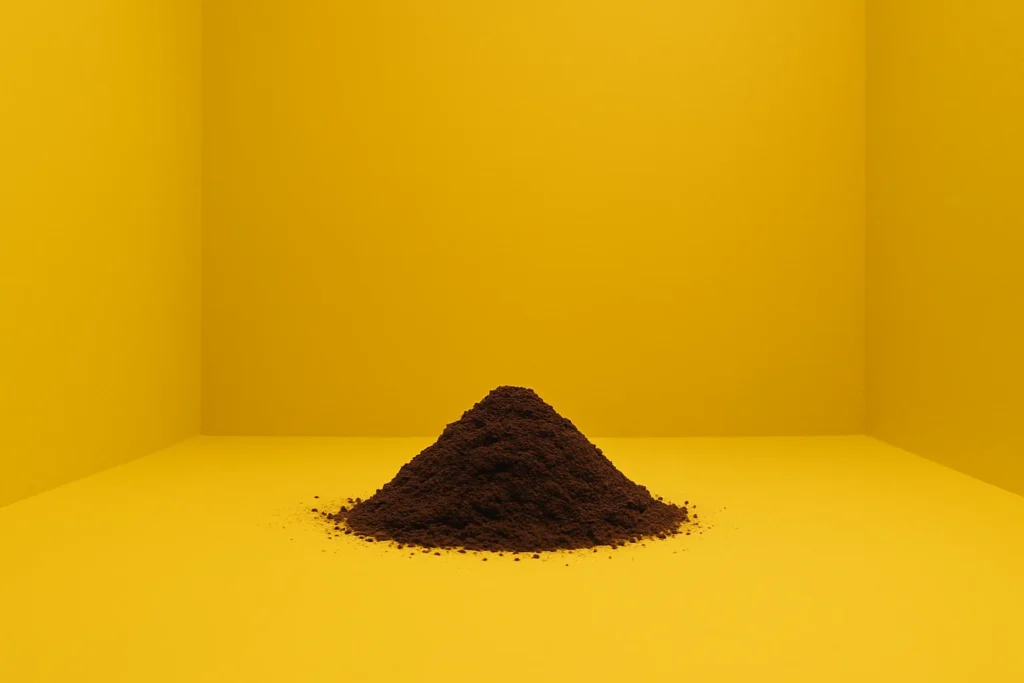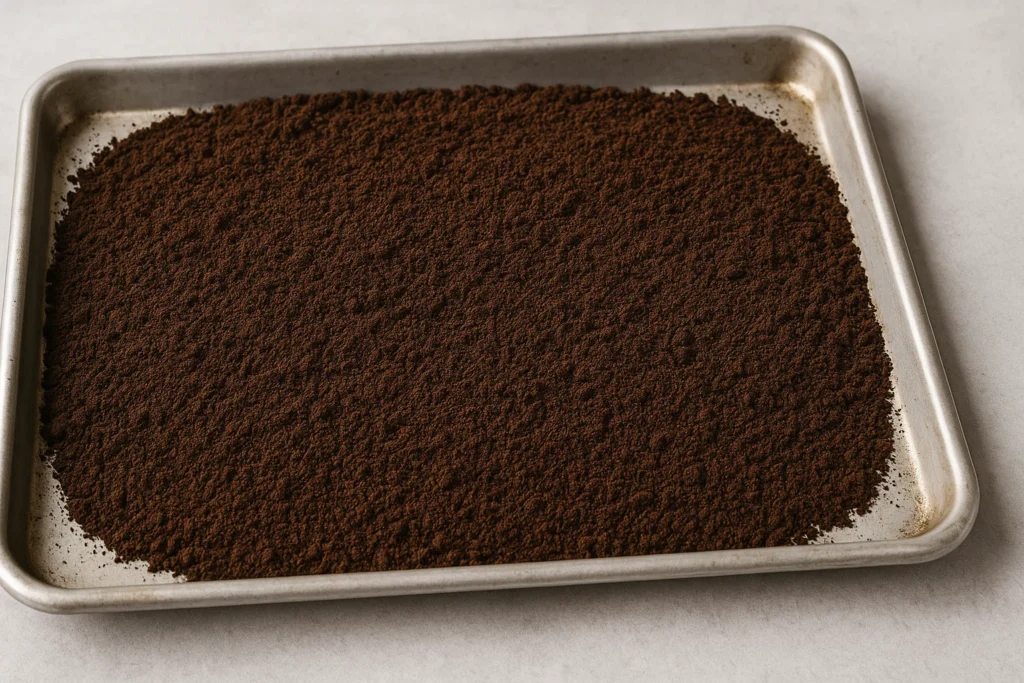Home » Coffee Knowledge » Brew Methods » coffee brewing tips » Can You Reuse Coffee Grounds? Here’s When It Works

If you’re anything like most coffee lovers, you probably feel a little guilty every time you scoop out a pile of used grounds into the trash or compost. They smell so good—surely they’ve got something left to give, right?
Good news: you’re not just being thrifty—there are actually a few smart, even tasty, ways to reuse coffee grounds. But not all second brews are created equal. In this post, we’ll break down when it works to reuse coffee grounds

Used coffee grounds are rich in moisture, making them a breeding ground for mold and bacteria if not handled properly. To safely repurpose them for DIY projects, gardening, or household uses, it’s crucial to dry them thoroughly. This not only prevents mold growth but also extends their shelf life, ensuring they’re ready whenever inspiration strikes.
How to Dry Used Coffee Grounds:
Air Drying: Spread the used grounds in a thin layer on a baking sheet lined with newspaper or paper towels. Place the sheet in a well-ventilated area away from direct sunlight. Stir the grounds daily to promote even drying. Depending on humidity levels, this process can take 2–3 days.
Oven Drying: For a quicker method, preheat your oven to its lowest setting (around 150–200°F or 65–93°C). Spread the grounds evenly on a baking sheet and place them in the oven for 20–30 minutes, stirring every 10 minutes to ensure uniform drying. Allow them to cool completely before storage.
Storage Tips:
Once dried, store the coffee grounds in an airtight container, such as a glass jar or resealable plastic bag. Adding a moisture absorber, like a silica gel packet or a strip of newspaper, can help maintain dryness. Keep the container in a cool, dry place away from direct sunlight to preserve the grounds’ quality for several months.
 Let’s get this out of the way first: reusing coffee grounds to brew another cup of coffee technically works, but the results are… well, weak and in most cases, I would steer away from rebrewing, and here’s why;
Let’s get this out of the way first: reusing coffee grounds to brew another cup of coffee technically works, but the results are… well, weak and in most cases, I would steer away from rebrewing, and here’s why;
The first brew pulls out the majority of the oils, acids, and flavors that make your cup rich and satisfying. So if you reuse them, expect a watery, bitter brew that lacks the boldness of round one. Think of it like re-steeping a black tea bag for the third time. You’ll get something in the cup—but is it what you actually want?
When it’s okay to re-brew:
In a pinch and just want some caffeine
Making a cold brew concentrate and want to stretch it with a second steep (note: still weaker)
Mixing fresh and used grounds to reduce waste a bit (though it’s not ideal flavor-wise)
If you’re serious about flavor, we recommend keeping re-brewing experiments to the weekends—or the days you forget to restock your beans.

Whether you’re into DIY projects, gardening, or just hate waste, coffee grounds can be a secret weapon in your daily routine. They’re gritty, versatile, and surprisingly effective in everything from skincare to soil care. Think of them as nature’s little multitaskers—ready to freshen, scrub, repel, and even fertilize with zero effort and zero guilt.
From your bathroom to your backyard, there’s almost no corner of your life that can’t benefit from a second round of coffee grounds. The best part? You’re giving something a new purpose and cutting down on waste.
Natural deodorizer: Coffee absorbs odors. Keep a bowl in your fridge or sprinkle in the trash can.
DIY Coffee Body Scrub: Mix used grounds with coconut oil and sugar for a natural exfoliator that smells like heaven.
Click Here To See Our unique coffee body scrub recipe
Insect repellent: Sprinkle grounds in the yard or near entryways. Ants and snails aren’t fans.
Here’s our take on a coffee pest control recipe
Check out this video that shows you exactly how to use coffee grounds in compost:
This one comes up a lot, and it’s a good question: Is it safe to reuse coffee grounds?
Short answer: yes—but only if they’re fresh.
Coffee grounds left out for too long (especially if they’re damp) can grow mold or bacteria. If you’re planning to reuse them within a few hours or the same day, you’re good. But letting them sit overnight in your French press? Hard pass.
Tips to keep things safe:
Store used grounds in the fridge if you’ll reuse them later that day
Don’t reuse grounds for brewing more than once
Don’t consume used grounds that have been sitting for more than 12 hours
Reusing coffee grounds isn’t going to replace your favorite single-origin pour-over—but it can help you waste less, experiment more, and maybe even exfoliate your elbows. Whether you’re trying to save money, get crafty, or just satisfy your curiosity, it’s worth knowing the limits—and the possibilities—of your daily grind.
If you’re looking to dive deeper into home coffee setups, you might also enjoy our guide on how to make strong coffee at home.
SHARE THIS POST

Welcome to Coffee Slang—I’m Nick Puffer, a former barista turned coffee enthusiast. What started behind the counter became a passion I now share with others. Join me as we explore the craft, culture, and lifestyle of coffee.
We care a lot about the experience you have with coffee. A lot of work has gone into getting great beans to your door.
Get Updates From Us When We Create New Ways To Explore Coffee!